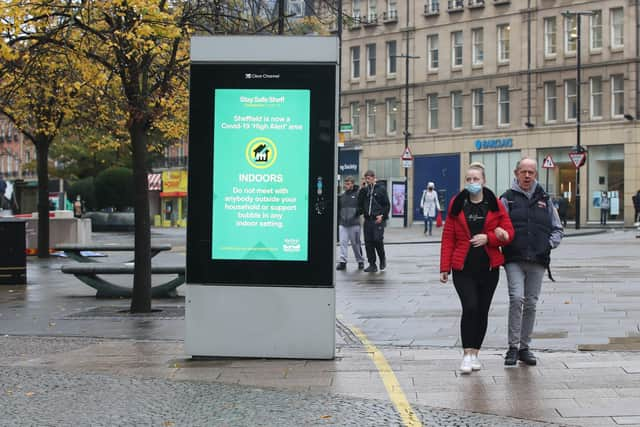When does lockdown officially end in Sheffield and when can shops, restaurants, salons and gyms reopen?
and live on Freeview channel 276
MPs will vote today (Tuesday, December 1) on whether England should follow a tougher tier system when country-wide measures ends tomorrow (Wednesday, December 2).
Under the new three-tier approach, where Sheffield will be subjected to the harshest level restrictions, 99% of the country will be placed in the two highest levels of measures.
Advertisement
Hide AdAdvertisement
Hide AdBut when will the restrictions in the region be reviewed and what will be considered when deciding an area’s tier?


How many people are to face tough restrictions?
More than 55 million people will be placed into Tier 2 and Tier 3 measures on December 2, meaning mixing between households indoors will effectively be banned for the vast majority of the country.
Only the Isle of Wight, Cornwall and the Isles of Scilly – accounting for little more than 1% of England’s population – face the lightest Tier 1 coronavirus restrictions, which are classed as the ‘medium tier’.
Large swathes of Yorkshire, Midlands, North East and North West are in the most restrictive Tier Three, which accounts for 41.5% of the population, or 23.3 million people.
Advertisement
Hide AdAdvertisement
Hide AdThe majority of authorities – including London – will be in Tier 2, which will cover 57.3% of the country, or 32 million people.
It comes after 28 areas in Sheffield had a lower Covid-19 rate than the whole of London, despite the city being placed in a higher tier.
What are the key indicators that will determine the restrictions in each area?
The government will analyse five factors before deciding which tier an area falls into, such as the case detection rates in all groups but specifically case detection rates in the over-60s, who are less likely to be able to fight off the virus.
Advertisement
Hide AdAdvertisement
Hide AdMinisters also look at the rate at which cases are rising or falling as an indicator for how well local authorities can cope with the level of infections.
The positivity rate – the number of positive cases detected as a percentage of tests taken is considered, alongside the pressure on the NHS.
Why are there not rigid thresholds?
The Government has said it needs to maintain flexibility to weigh the indicators against each other – such as whether hospital capacity in neighbouring areas is lower.
Another example given in the coronavirus winter plan is that case detection rates would need to be weighed against whether the spread of the virus is localised to particular communities.
Advertisement
Hide AdAdvertisement
Hide AdThe plan states “given these sensitivities, it is not possible to set rigid thresholds for these indicators, as doing so would result in poorer quality decisions”.
When can changes be made to an area’s tier?
If MPs vote in support of the new three-tier system and the system comes into effect, the first review of restrictions is set for December 16.
Mr Johnson has said the allocation of tiers will be reviewed every 14 days from that date and suggested mass testing could make households exempt from restrictions.
He also said that at the first review of the measures in mid-December he would move areas down a tier where there is “robust evidence” that coronavirus is in sustained decline.
What can reopen?
Advertisement
Hide AdAdvertisement
Hide AdEssential and non-essential retail, including indoor and outdoor markets and car boot sales, can reopen from tomorrow.
Gyms, sports courts and facilities, leisure centres, fitness and dance studios, golf courses, swimming pools, riding centres, outdoor playgrounds can also reopen.
Personal care and close contact services such as hairdressers and barbers, beauty salons, tattoo parlours, nail salons, spas and beauty services, massage parlours and tanning salons will also be allowed to reopen.